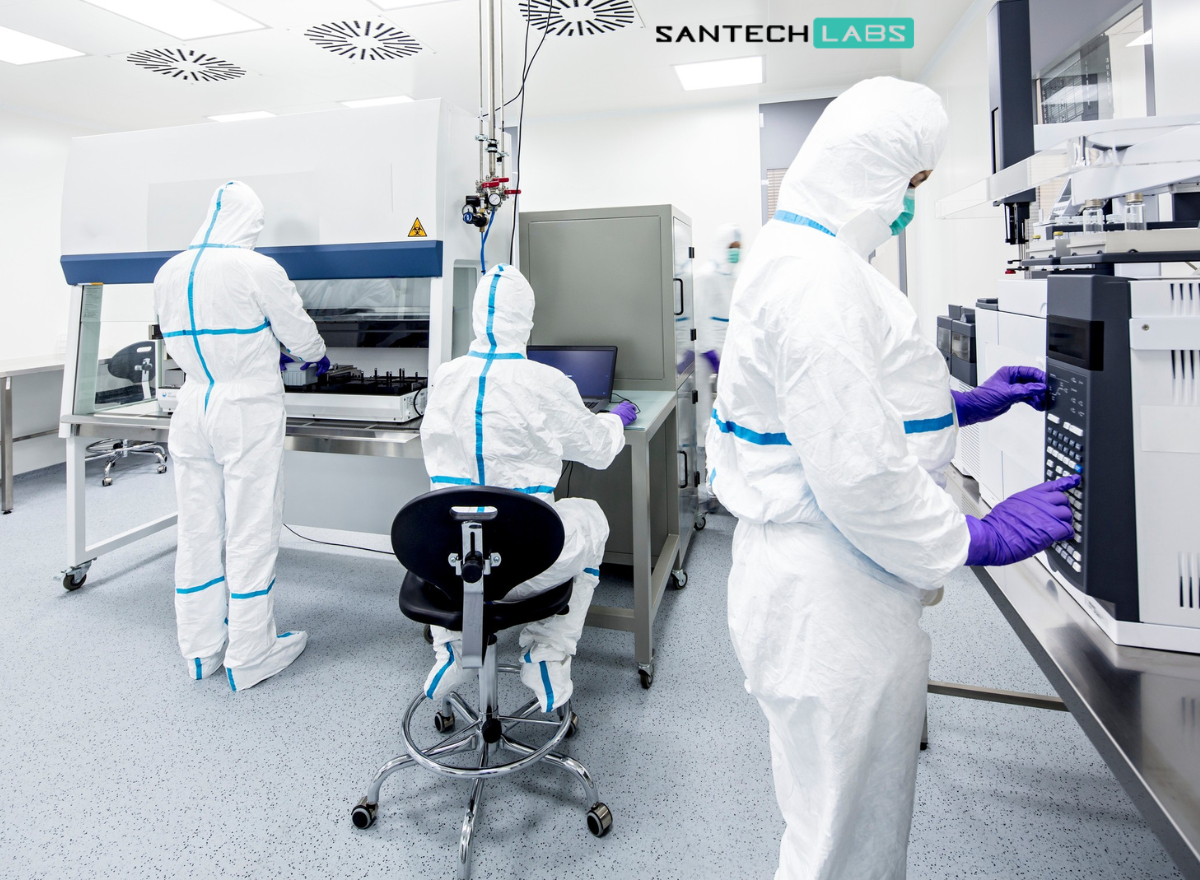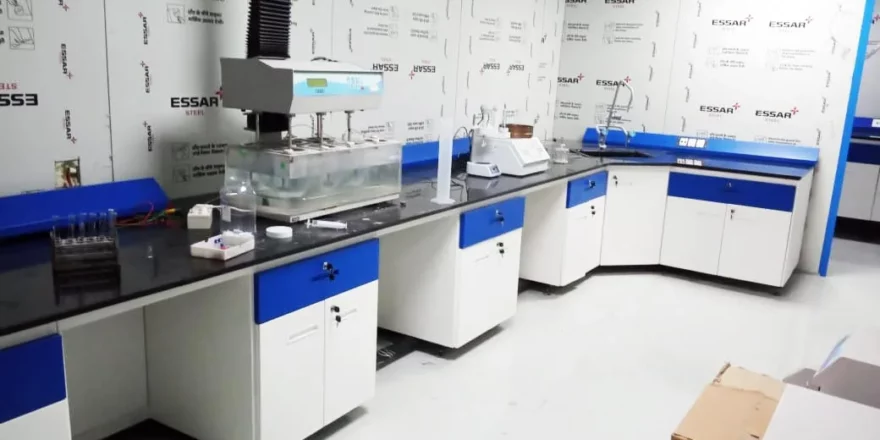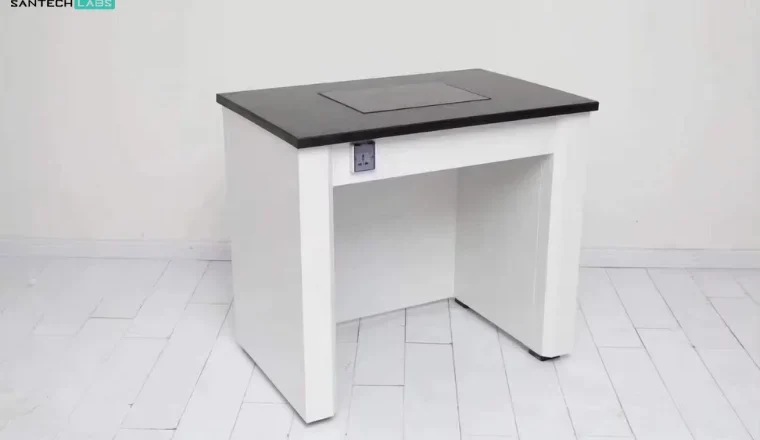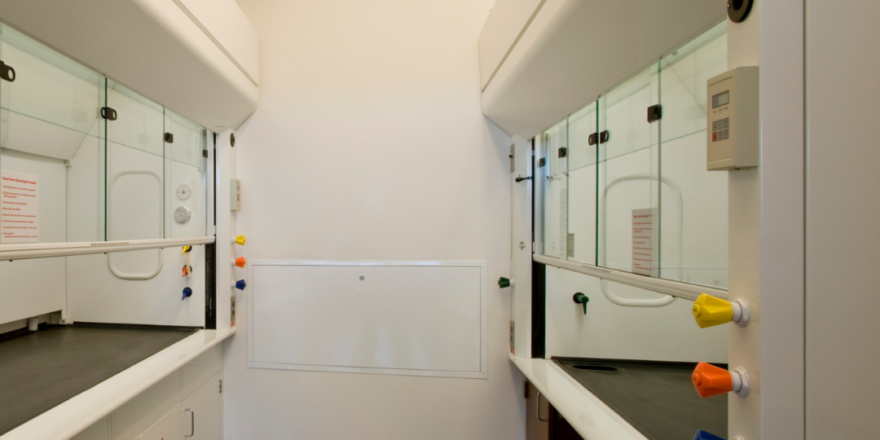All laboratory fume hoods work on the basic principle of containment. They control exposure to toxic, offensive, or flammable vapours, gases, and aerosols. A typical fume hood is a cabinet with a movable front of safety glass. A properly used and functioning fume hood exhausts harmful gases, dust, mists, and vapours from a confined location, protecting workers from inhalation exposure.
In this blog post, we will delve into the intricate manufacturing process behind the science of creating fume hoods. From understanding the fundamentals to exploring advanced techniques, we have covered you, ensuring you are well-informed about the process.
What is Laboratory Fume Hood?
In the lab, harmful chemicals, dust particles, chemical vapours, mist, gas, or aerosols can harm workers’ inhalation or contaminate the lab environment. A fume hood is a significant exhaust system manufactured, as the name implies, to remove fumes from the laboratory or work area.
Laboratory Fume hoods are like large boxes with moveable “doors.” Experiments or processes are conducted within the hood, and vapours are removed or “exhausted” through ductwork, usually equipped with a blower. Harmful contaminants are filtered or diluted until they are no longer dangerous.
Steps For Manufacturing Of Laboratory Fume Hoods
Fume hoods play a crucial role in laboratories by safely venting harmful fumes and gases. Understanding how these essential pieces of equipment are manufactured is vital to ensuring their safety and effectiveness, which can provide a sense of security in your work environment.
1. Research and Design
Conduct thorough research according to industry regulations and standards. With the help of engineers and designers, create a blueprint. The manufacturers should also consider materials, dimensions, and airflow dynamics.
2. Material Selection
The material used by laboratory fume hood manufacturers should be high-quality and resistant to corrosion and chemical damage. Standard materials are stainless steel, tempered glass, and chemical-resistant polymers. Ensure compliance with safety standards and regulations.
3. Manufacturing Process
Components are precisely cut using CNC machines or computer-controlled laser cutters. Blending machines form the metals into the desired sheets for the hood body, sash, and other components. Welding techniques like TIG (Tungsten Inert Gas) ensure solid and secure joints.
Fume hood manufacturers also integrate other components, such as electrical wiring, exhaust ducts, and control panels, in this stage. The process involves a series of quality checks and inspections to ensure that each component meets the highest standards of safety and effectiveness.
4. Assembly and Testing
Once the laboratory fume hood manufacturers have assembled every part of the fume hood, it undergoes rigorous testing to ensure that all welds are secure, surfaces are free of defects, and every part functions correctly.
The chosen material must be polished to meet chemical resistance requirements and aesthetics.
Safety features like emergency eyewash stations and sash interlocks are rigorously tested.
5. Customisation Options By Fume Hood Manufacturers
For additional chemical resistance, some manufacturers offer customisation options, such as epoxy-coated work surfaces. This feature is beneficial in labs where corrosive chemicals are used.
Advanced features, such as automatic sash control or built-in airflow monitoring systems, can be integrated based on specific lab needs. These features enhance the fume hood’s safety and efficiency, making it a more reliable tool for scientific research.
6. Testing and Maintenance
Fume hoods are the workhorses of the laboratories, protecting researchers from harmful chemicals. But, like any equipment, they require regular testing and maintenance to ensure optimal performance and continued safety.
- Make sure exhausts are working, and there is sufficient face velocity before starting work.
- Use protective gear and fume hoods properly.
- If there is an exhaust system failure, turn off the power and all services, lower the sash, and leave the area immediately.
- Ensure certification has been done for smoke tests and tracer gas contaminants.
7. Packing And Shipping Of Fume Hoods
Once a fume hood passes rigorous testing and is deemed perfect, it embarks on its final journey to the laboratory. However, this simple process is delicate, like ductwork and electrical panels. Here’s how they are packed and shipped
- Package the fume hoods securely using protective foam or bubble wrap to prevent damage during transit.
- Label packages with handling instructions and safety precautions. This transparent communication promotes careful handling by transportation crews.
- Coordinate logistics for timely delivery to clients. The size and weight of a fume hood often necessitate specialised freight transportation.
Steps For Using A Laboratory Fume Hood
In the lab, the fume hood is your faithful protector, shielding you from dangerous chemicals in the air. The steps involved in operating a laboratory fume hood safely and effectively are as follows:
- Firstly, before using a fume hood, make sure it is working. Check the airflow at the face is in the ideal range; there are no obstructions in front of the face on the work surface. Also, check around the fume hood to ensure the area around the baffles is clear.
- Keep checking on airflow variations. You can “feel” changes often, even if your fume hood does not have a gauge. If you have any doubts, stop work, close the fume hood to the recommended level, and get help. It is better to check rather than risk potentially disastrous outcomes.
- When doing the work, the operators should keep their faces outside the hood and use the sash for protection.
- The distance to work from the hood should be at least 6 inches. Ensure there are no obstructions and that proper air is ventilated while performing work. Tape on the floor is used for hoods that are not portable.
- Use proper gloves, goggles, face shields, PPE, and aprons.
- If you use a floor fume hood or a distillation hood, put them on stands to allow airflow around and beneath them.
- To save energy and keep the fume hood operating at its most efficient level, keep it operating at its most efficient level.
Conclusion
Fume hoods are merely a component of laboratory personal protective equipment. They function effectively, provided that users maintain them and use them correctly. Like any equipment, a fume hood can be misused, neglected, or cause severe consequences, such as harm.
Santech Labs is a reputable company in the industry that provides excellent lab accessories. While this blog post focuses on the general manufacturing process of laboratory fume hoods, it’s worth mentioning that Santech Labs is one of the most respected companies providing the best lab furniture options. At Santech, each lab frame is made with quality raw materials to provide an efficient and dependable framework that supports accurate, balanced, quantitative, and qualitative scientific and research operations.




